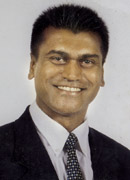|
observer |
|
|
|
|
|
OTHER LINKS |

|

|

|
Annual reports focus on increased profits, share price
The annual reports directed disclosures mainly towards capital providers as the primary users of annual reports with the aim of increasing profits and share price of firms. The predominance of disclosure about brand building and corporate image building is testimony to this motivation. According to Senior Lecturer discipline of Accounting, University of Sydney Dr. Indra Abeysekera the disclosures have been used to manage public impressions, since they appeared to be selective communication designed to manage impressions, knowledge, attitudes of stakeholders so that firms could increase profits and share price. The firms recognise all shareholder types including regulators, community and capital providers as relevant. The acknowledgement of regulatory action was prominent in politically sensitive industry sectors such as alcoholic beverage and tobacco. These industry sectors attempted to counter further such action by disclosure that empathised with regulators and community stakeholders. He said that there is evidence based on research that argues that intangible assets play an important role in determining profits and market value of firms. However, traditional financial reporting has excluded them as non measurable items. As a result the conventional balance sheet and the income statement do not make mandatory disclosures but reports them as voluntary disclosures in annual reports. Given that IT is still in its infancy in Sri Lanka and internet usage among people in Sri Lanka is low it is more likely that stakeholders who are interested in the workings of the firms rely on annual reports for such additional information. These stakeholders include regulators community and capital providers. My previous research with the top 30 listed firms in Sri Lanka confirms prolific disclosures about intangible assets that signal stakeholders about the workings of the firms. These intangible assets disclosed voluntarily by firms can be categorised as internal capital, human capital and external capital. Internal capital are intangibles generated using the internal structure of the firm while human capital are intangibles generated using the human resources of the firm. External capital are intangibles generated using the customer and supplier relations of the firm. My previous research confirm that the most disclosed intangible assets are the external capital category. He said that he looked at the reasons behind the top 30 listed firms disclosing external capital as the most disclosed tangible asset category. Intangible assets in external assets category comprise brand building, corporate image building, distribution channels, business partnership and market share. "I reviewed annual reports of the top 30 listed firms from 1998-2003 and interviewed marketing directors and senior personnel to understand their views from 11 industry sectors that represented the top 30 firms. The analysis revealed that overall firms have disclosed brand building, corporate image building, distribution channels, business partnering and market share in descending order." Brand building sits in the most value added chain offering a premium price to products and services. Corporate image building is an asset by itself given that they are the top 30 listed firms well known to stakeholders. It builds credibility, confidence and reassurance about the firm among stakeholders. Firms often enhanced their corporate image building portraying as good corporate citizens involved in community activities being responsible for social development. Distribution channels enhance value of the firm by ensuring products and services at reach of the customers to trigger sales. The market share allows firms to dominate on products and services in the market often setting the background to become the leaders to set prices on products and services. These overall results differed between industry sectors. For example hotel and engineering industry sectors did not disclose more about brand building. Instead they disclosed more about corporate image building, said Dr Abeysekera. These firms did not have many brands to promote as such but stakeholders were well aware about the corporate image of these firms. A few firms had taken a novel strategic direction of merging brand building with corporate image building in the belief that it would improve their profits and share price. But for others it was a more thoughtful and encompassing exercise. The alcoholic beverage and tobacco industry sector are subject to political pressure. Their preferred strategy is to separate brand building from corporate image building. However, the mere monopoly status of these firms negates the preferred strategy as stakeholders could closely relate their corporate image with their brand image. Some industry sectors disclosed more about distribution channels in annual reports than others depending on their importance for capital accumulation using their products and services. The types of distribution channels mentioned at interviews as used by their firms also varied depending on the industry sector. The fourth most disclosed in annual reports was business partnering. However, those industry sectors disclosed revealed less about business partnering were multinationals and these firms generally did not seek business partnering to attract capital and profitability. Although all industry sectors reported least about their market share the interviews revealed that all industry sectors focused strongly on managing market share. The interview findings identified crucial business strategy used by firms was to maximise profits and share price through increasing their volume of sales. Some firms that were market leaders appeared to have assumed that their dominant market presence among stakeholders was common knowledge in the market place and appears to be the reason for low market share disclosure, he said. |









